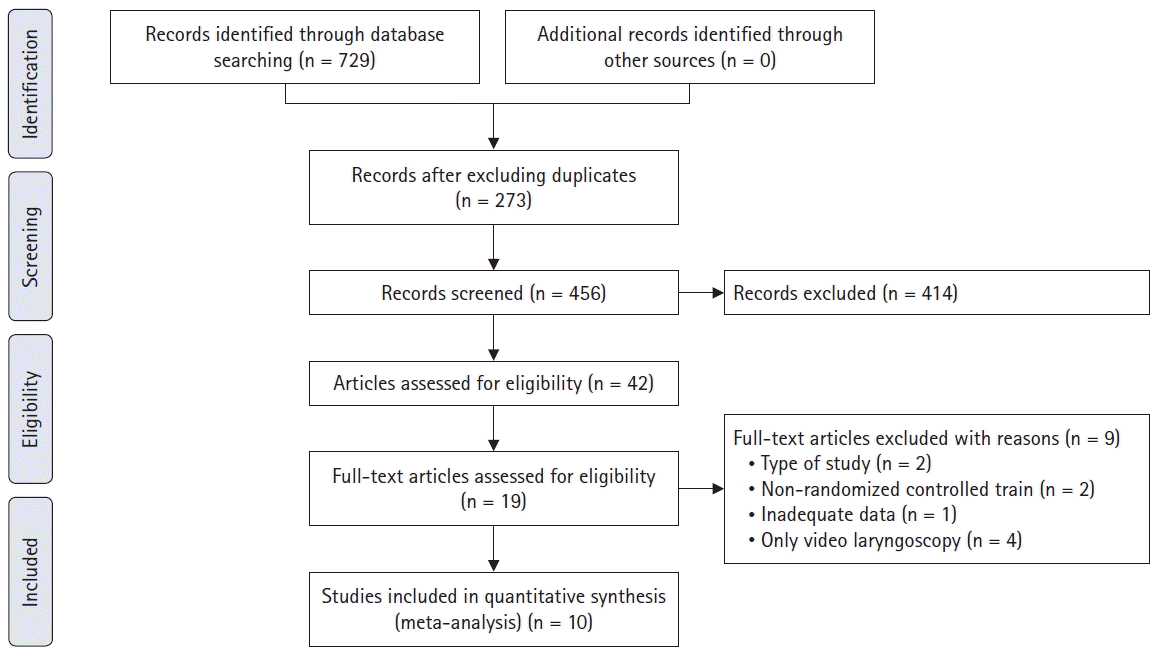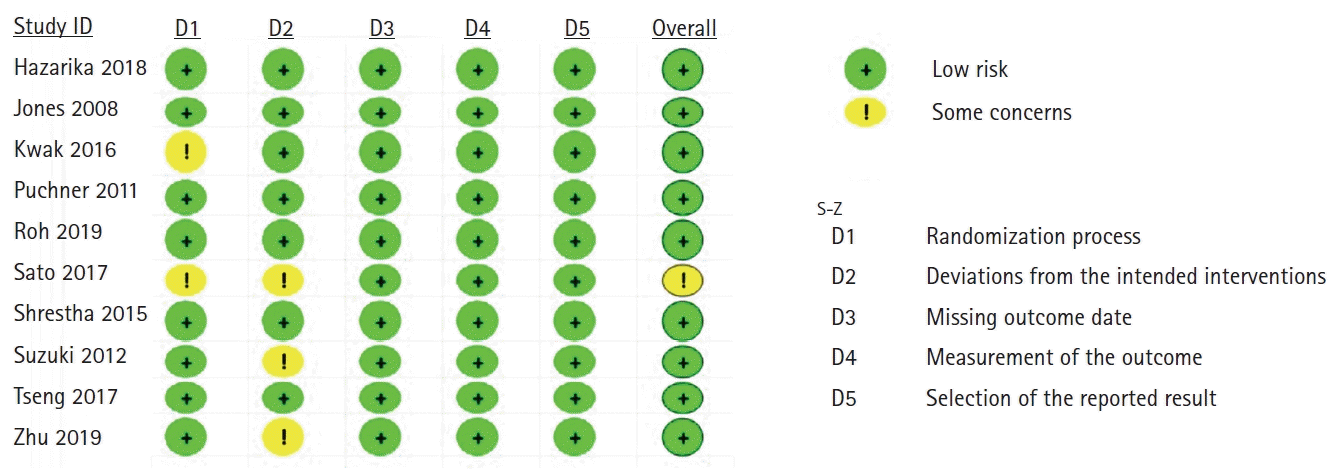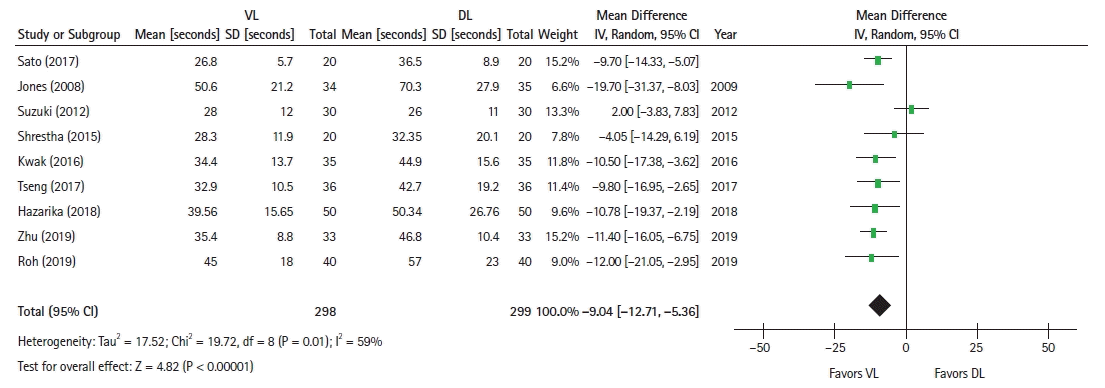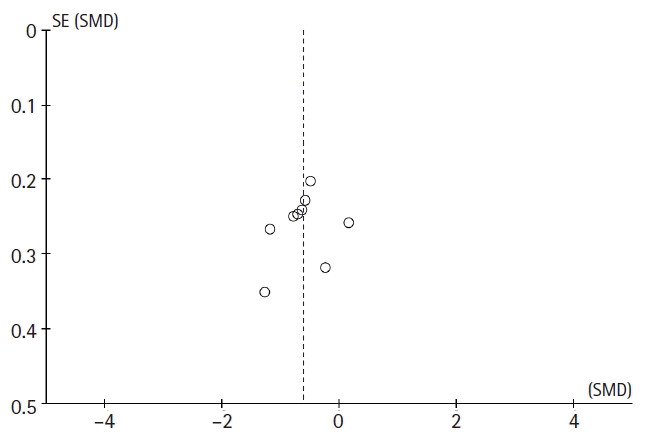1. Hall CE, Shutt LE. Nasotracheal intubation for head and neck surgery. Anaesthesia. 2003; 58:249–56.

2. National Audit Project. Major complications of airway management in the UK: results of the Fourth National Audit Project of the Royal College of Anaesthetists and the Difficult Airway Society. Part 1: anaesthesia. Br J Anaesth. 2011; 106:617–31.
3. Adnet F, Baillard C, Borron SW, Denantes C, Lefebvre L, Galinski M, et al. Randomized study comparing the “sniffing position” with simple head extension for laryngoscopic view in elective surgery patients. Anesthesiology. 2001; 95:836–41.

4. Aziz MF, Dillman D, Fu R, Brambrink AM. Comparative effectiveness of the C-MAC video laryngoscope versus direct laryngoscopy in the setting of the predicted difficult airway. Anesthesiology. 2012; 116:629–36.

5. Cooper RM, Pacey JA, Bishop MJ, McCluskey SA. Early clinical experience with a new videolaryngoscope (GlideScope) in 728 patients. Can J Anaesth. 2005; 52:191–8.

6. Moon EJ, Kim MK, Kim KS. Pentax-AWS videolaryngoscope for nasotracheal intubation in patients with difficult airways. Korean J Anesthesiol. 2013; 64:87–8.

7. Asai T, Liu EH, Matsumoto S, Hirabayashi Y, Seo N, Suzuki A, et al. Use of the Pentax-AWS in 293 patients with difficult airways. Anesthesiology. 2009; 110:898–904.

8. Hirabayashi Y, Hoshijima H, Kuratani N, Masaki E. Efficacy of videolaryngoscopes for nasotracheal intubation: a meta-analysis of randomized controlled trials. Masui. 2013; 62:1375–9.
9. Jiang J, Ma DX, Li B, Wu AS, Xue FS. Videolaryngoscopy versus direct laryngoscopy for nasotracheal intubation: A systematic review and meta-analysis of randomised controlled trials. J Clin Anesth. 2019; 52:6–16.

10. Moher D, Liberati A, Tetzlaff J, Altman DG; PRISMA Group. Preferred reporting items for systematic reviews and meta-analyses: the PRISMA statement. J Clin Epidemiol. 2009; 62:1006–12.

11. Shamseer L, Moher D, Clarke M, Ghersi D, Liberati A, Petticrew M, et al. Preferred reporting items for systematic review and meta-analysis protocols (PRISMA-P) 2015: elaboration and explanation. BMJ. 2015; 350:g7647.

12. Higgins JP, Thomas J, Chandler J, Cumpston M, Li T, Page MJ, et al. Cochrane handbook for systematic reviews of interventions. 2nd ed. Chichester: John Wiley & Sons;2019.
13. McGuinness LA, Higgins JP. Risk-of-bias VISualization (robvis): An R package and Shiny web app for visualizing risk-of-bias assessments. Res Synth Methods. 2021; 12:55–61.

14. Guyatt G, Oxman AD, Akl EA, Kunz R, Vist G, Brozek J, et al. GRADE guidelines: 1. Introduction-GRADE evidence profiles and summary of findings tables. J Clin Epidemiol. 2011; 64:383–94.

15. Egger M, Davey Smith G, Schneider M, Minder C. Bias in meta-analysis detected by a simple, graphical test. BMJ. 1997; 315:629–34.

16. Lili X, Zhiyong H, Jianjun S. A comparison of the Glidescope with the Macintosh laryngoscope for nasotracheal intubation in patients with ankylosing spondylitis. J Neurosurg Anesthesiol. 2014; 26:27–31.

17. Seo KH, Kim KM, John H, Jun JH, Han M, Kim S. Comparison of C-MAC D-blade videolaryngoscope and McCoy laryngoscope efficacy for nasotracheal intubation in simulated cervical spinal injury: a prospective randomized comparative study. BMC Anesthesiol. 2020; 20:114.

18. Ono K, Goto T, Nakai D, Ueki S, Takenaka S, Moriya T. Incidence and predictors of difficult nasotracheal intubation with airway scope. J Anesth. 2014; 28:650–4.
19. Heuer JF, Heitmann S, Crozier TA, Bleckmann A, Quintel M, Russo SG. A comparison between the GlideScope® classic and GlideScope® direct video laryngoscopes and direct laryngoscopy for nasotracheal intubation. J Clin Anesth. 2016; 33:330–6.

20. Jones PM, Turkstra TP, Armstrong KP, Armstrong PM, Harle CC. Comparison of a single-use GlideScope Cobalt videolaryngoscope with a conventional GlideScope for orotracheal intubation. Can J Anaesth. 2010; 57:18–23.

21. Staar S, Biesler I, Müller D, Pförtner R, Mohr C, Groeben H. Nasotracheal intubation with three indirect laryngoscopes assisted by standard or modified Magill forceps. Anaesthesia. 2013; 68:467–71.

22. Kang R, Jeong JS, Ko JS, Ahn J, Gwak MS, Choi SJ, et al. Neutral position facilitates nasotracheal intubation with a GlideScope video laryngoscope: a randomized controlled trial. J Clin Med. 2020; 9:671.

23. Pourfakhr P, Ahangari A, Etezadi F, Moharari RS, Ahmadi A, Saeedi N, et al. Comparison of nasal intubations by GlideScope with and without a bougie guide in patients who underwent maxillofacial surgeries: randomized clinical trial. Anesth Analg. 2018; 126:1641–5.
24. St Mont G, Biesler I, Pförtner R, Mohr C, Groeben H. Easy and difficult nasal intubation--a randomised comparison of Macintosh vs Airtraq® laryngoscopes. Anaesthesia. 2012; 67:132–8.
25. Hazarika H, Saxena A, Meshram P, Kumar Bhargava A. A randomized controlled trial comparing C Mac D Blade and Macintosh laryngoscope for nasotracheal intubation in patients undergoing surgeries for head and neck cancer. Saudi J Anaesth. 2018; 12:35–41.

26. Jones PM, Armstrong KP, Armstrong PM, Cherry RA, Harle CC, Hoogstra J, et al. A comparison of glidescope videolaryngoscopy to direct laryngoscopy for nasotracheal intubation. Anesth Analg. 2008; 107:144–8.

27. Zhu H, Liu J, Suo L, Zhou C, Sun Y, Jiang H. A randomized controlled comparison of non-channeled king vision, McGrath MAC video laryngoscope and Macintosh direct laryngoscope for nasotracheal intubation in patients with predicted difficult intubations. BMC Anesthesiol. 2019; 19:166.

28. Roh GU, Kwak HJ, Lee KC, Lee SY, Kim JY. Randomized comparison of McGrath MAC videolaryngoscope, Pentax Airway Scope, and Macintosh direct laryngoscope for nasotracheal intubation in patients with manual in-line stabilization. Can J Anaesth. 2019; 66:1213–20.

29. Kwak HJ, Lee SY, Lee SY, Cho SH, Kim HS, Kim JY. McGrath video laryngoscopy facilitates routine nasotracheal intubation in patients undergoing oral and maxillofacial surgery: a comparison with Macintosh laryngoscopy. J Oral Maxillofac Surg. 2016; 74:256–61.

30. Shrestha S, Arora S, Jain D, Rattan V, Sharma RK. Truview EVO2 Laryngoscope Reduces Intubation Difficulty in Maxillofacial Surgeries. J Oral Maxillofac Surg. 2015; 73:1919.e1-8.

31. Sato Boku A, Sobue K, Kako E, Tachi N, Okumura Y, Kanazawa M, et al. The usefulness of the McGrath MAC laryngoscope in comparison with Airwayscope and Macintosh laryngoscope during routine nasotracheal intubation: a randomaized controlled trial. BMC Anesthesiol. 2017; 17:160.

32. Suzuki A, Onodera Y, Mitamura SM, Mamiya K, Kunisawa T, Takahata O, et al. Comparison of the Pentax-AWS Airway Scope with the Macintosh laryngoscope for nasotracheal intubation: a randomized, prospective study. J Clin Anesth. 2012; 24:561–5.

33. Tseng KY, Lu IC, Shen YC, Lin CH, Chen PN, Cheng KI. A comparison of the video laryngoscopes with Macintosh laryngoscope for nasotracheal intubation. Asian J Anesthesiol. 2017; 55:17–21.

34. Puchner W, Drabauer L, Kern K, Mayer C, Bierbaumer J, Rehak PH, et al. Indirect versus direct laryngoscopy for routine nasotracheal intubation. J Clin Anesth. 2011; 23:280–5.

35. Griesdale DE, Liu D, McKinney J, Choi PT. Glidescope® video-laryngoscopy versus direct laryngoscopy for endotracheal intubation: a systematic review and meta-analysis. Can J Anaesth. 2012; 59:41–52.

36. Pieters BM, Maas EH, Knape JT, van Zundert AA. Videolaryngoscopy vs. direct laryngoscopy use by experienced anaesthetists in patients with known difficult airways: a systematic review and meta-analysis. Anaesthesia. 2017; 72:1532–41.

37. Hoshijima H, Kuratani N, Hirabayashi Y, Takeuchi R, Shiga T, Masaki E. Pentax Airway Scope® vs Macintosh laryngoscope for tracheal intubation in adult patients: a systematic review and meta-analysis. Anaesthesia. 2014; 69:911–8.
38. Ahmad I, El-Boghdadly K, Bhagrath R, Hodzovic I, McNarry AF, Mir F, et al. Difficult Airway Society guidelines for awake tracheal intubation (ATI) in adults. Anaesthesia. 2020; 75:509–28.





 PDF
PDF Citation
Citation Print
Print









 XML Download
XML Download